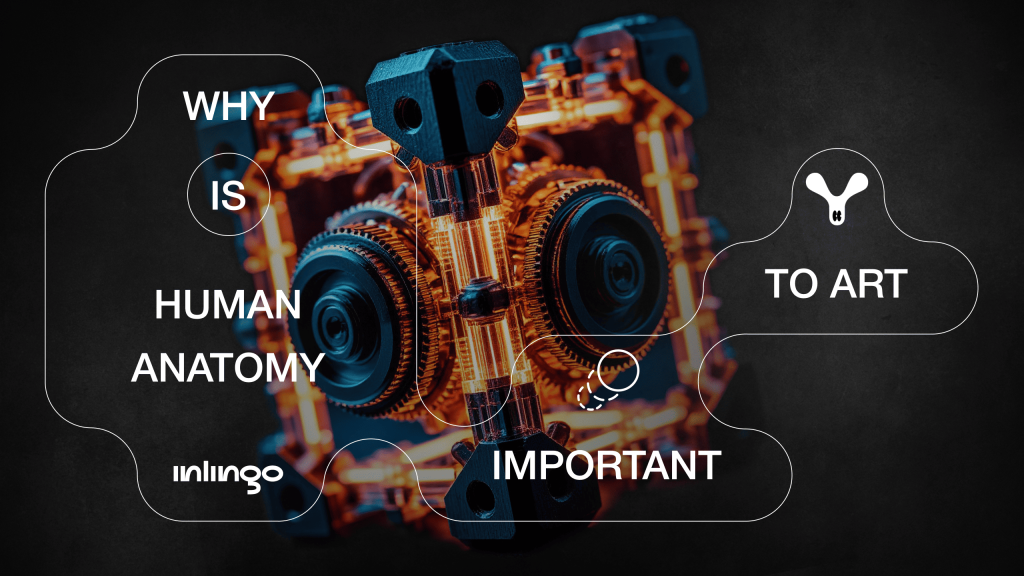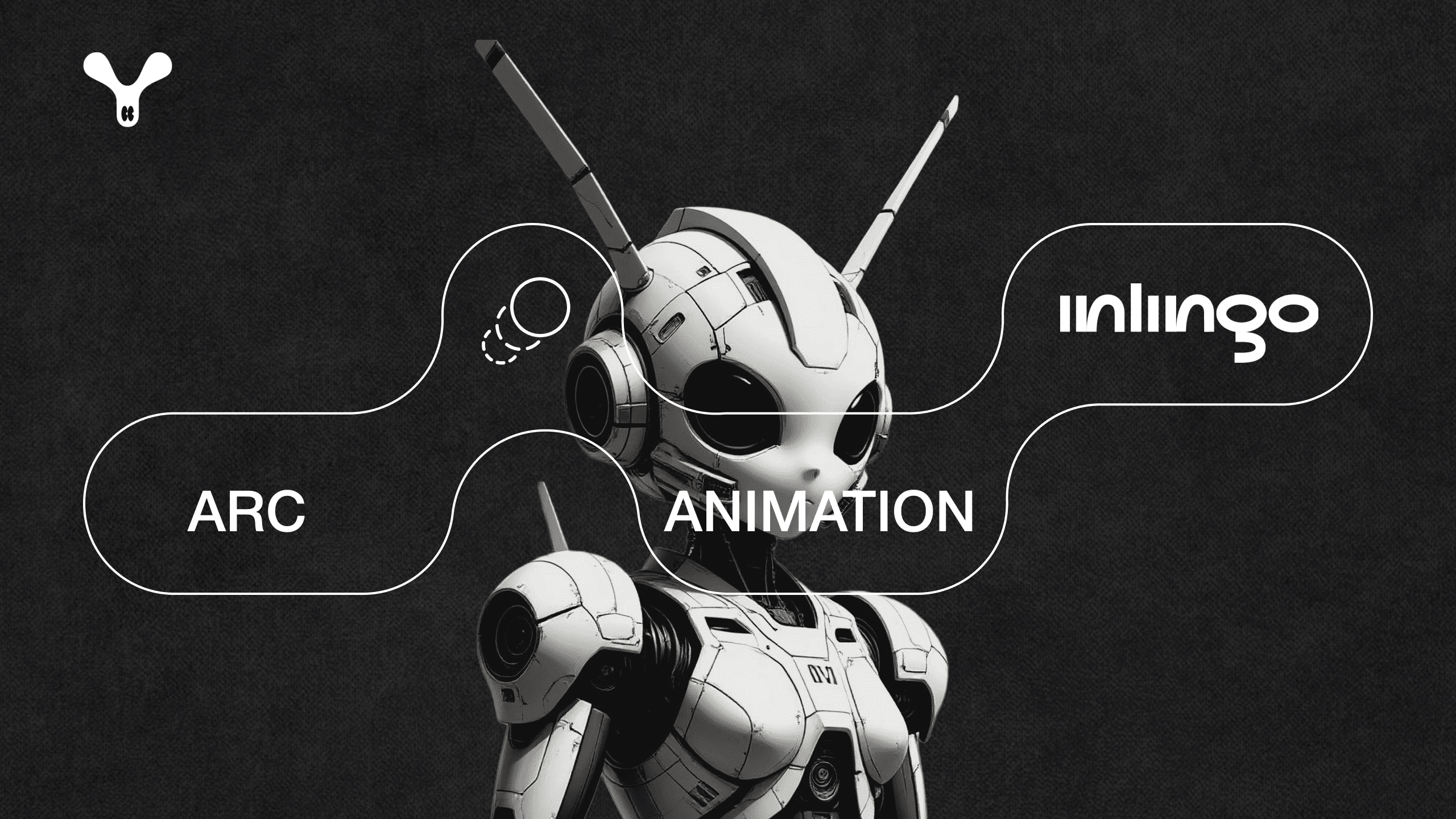A game’s visual language starts with characters — and it’s thanks to a knowledge of human anatomy that one can create something beautiful, convincing, lively, and memorable. Anatomy in art is the foundation—without this, body shape, movement, emotion, and character can’t be conveyed authentically.
For artists who create art for games, understanding human anatomy is important not only when drawing humans, but also when creating fantasy creatures, cyborgs, monsters, and stylized characters. Everything that has to be able to move, express feelings, or be visually compelling relies on anatomy in art in one way or another.
The significance of human anatomy
When an artist knows how the human body works, they can:
- Portray characters in dynamic poses without distorting their proportions
Proper posture conveys weight, tension, and movement. This is especially important for action games.
In God of War, Kratos moves with heft and power—his poses convey strength and his center of gravity matches his massive musculature. Each swing of his axe feels heavy thanks to the artists’ and animators’ understanding of anatomy and body mechanics.
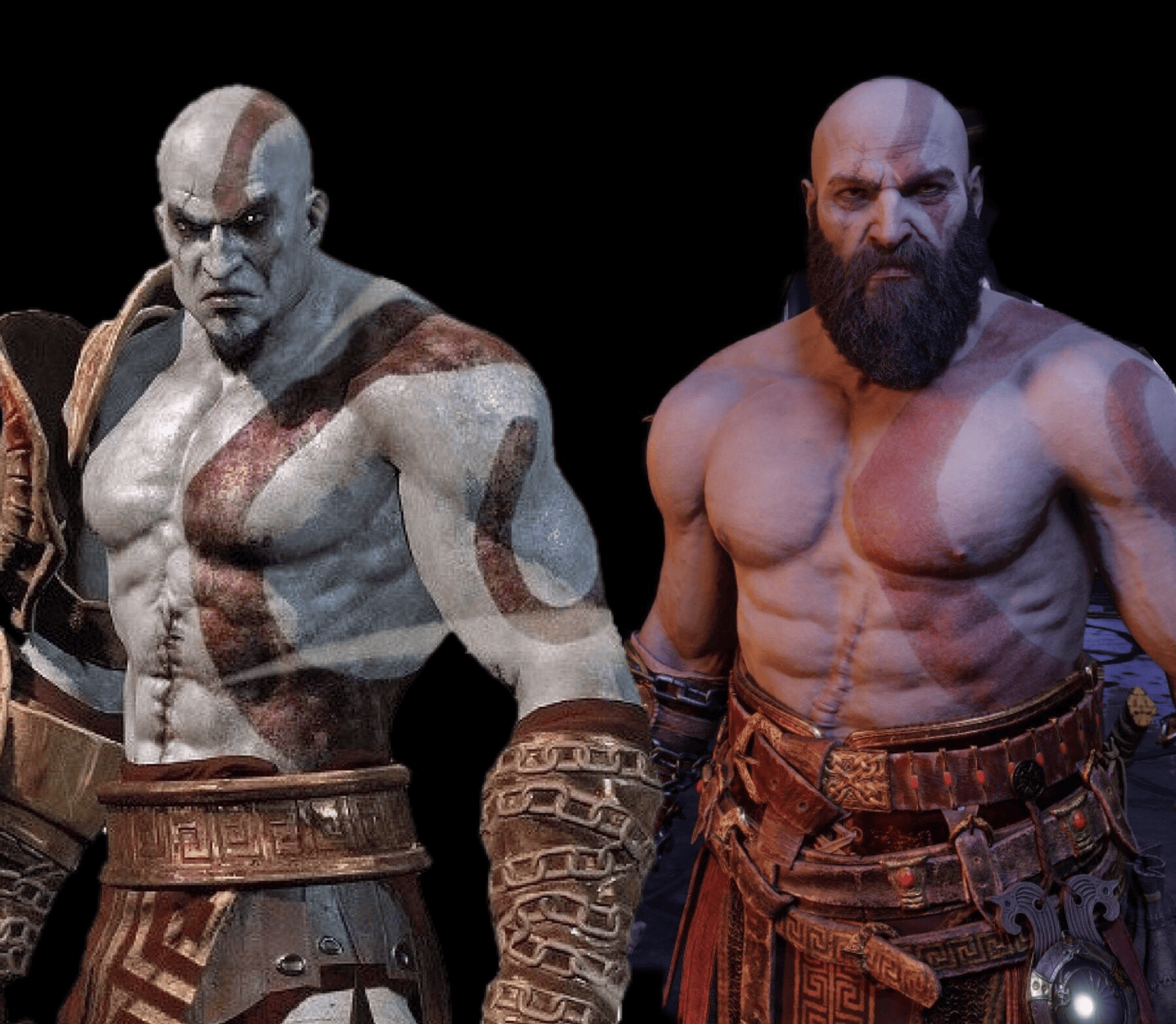
Kratos. Source
- Create illusions even when using stylized muscles
Even when using a cartoon style, it’s important that the body’s form works as a complete system. Don’t just “draw” muscles, make sure they respond to movement and can flex, contract, and stretch.
In Overwatch, the characters’ design is stylized, but the muscles on Soldier: 76, Reinhardt, and Zarya read flawlessly. Artists emphasized key muscle groups, such as those in the shoulders, chest, or arms, so that, even in a simplified form, the character’s power and strength come through.
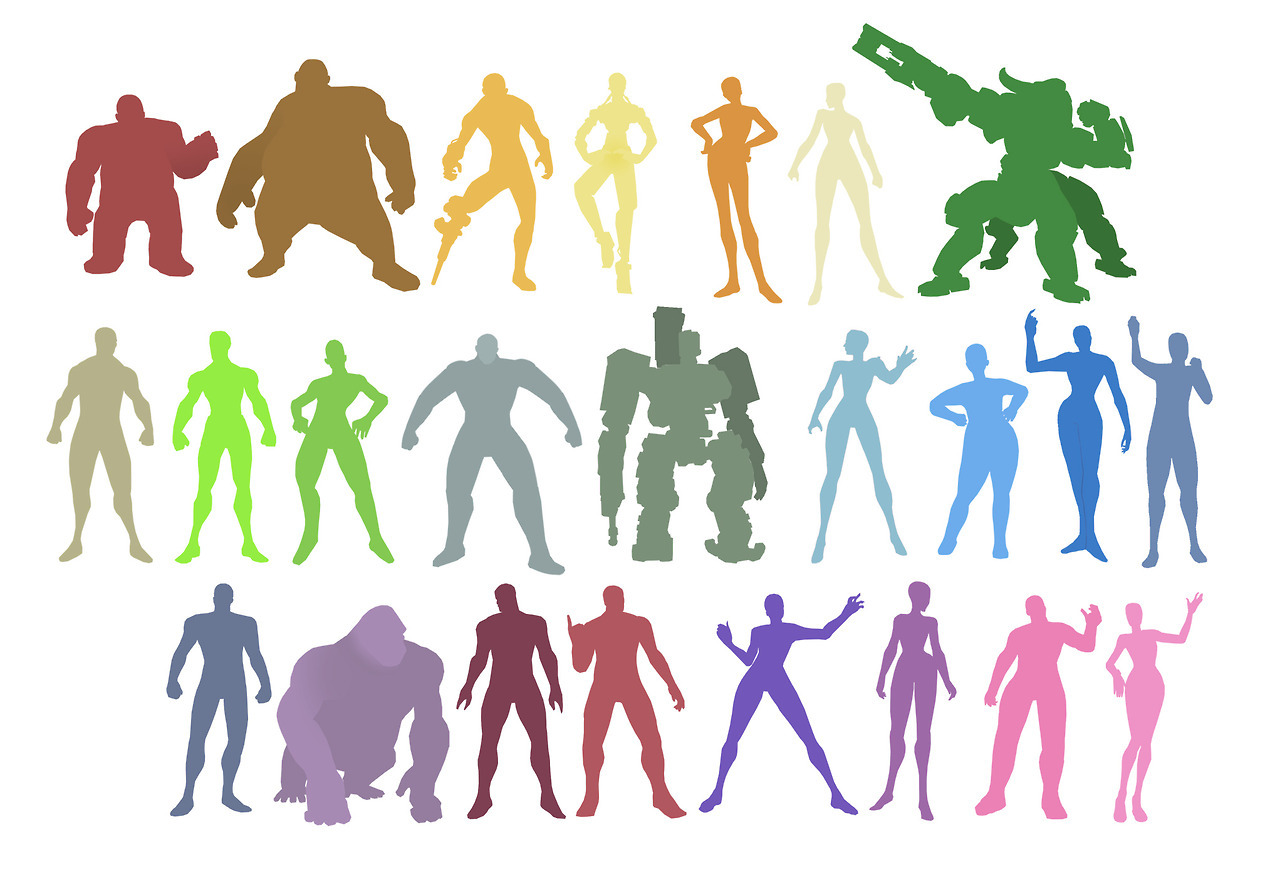
Body types in Overwatch are recognizable, even when shown in silhouette. Source
- Create realistic body, bone, joint, and movement designs
When artists understand how joints work, they know how far an elbow, knee, or spine can be bent, and can avoid unnatural angles. This is especially important when creating animations and models.
In The Last of Us, character animations (especially Ellie) are the result of both motion capture technology and lots of time spent fine-tuning the anatomy. Attention was paid to things like shoulder position or how the body reacts to the weight of a weapon or backpack, making the movements believable.
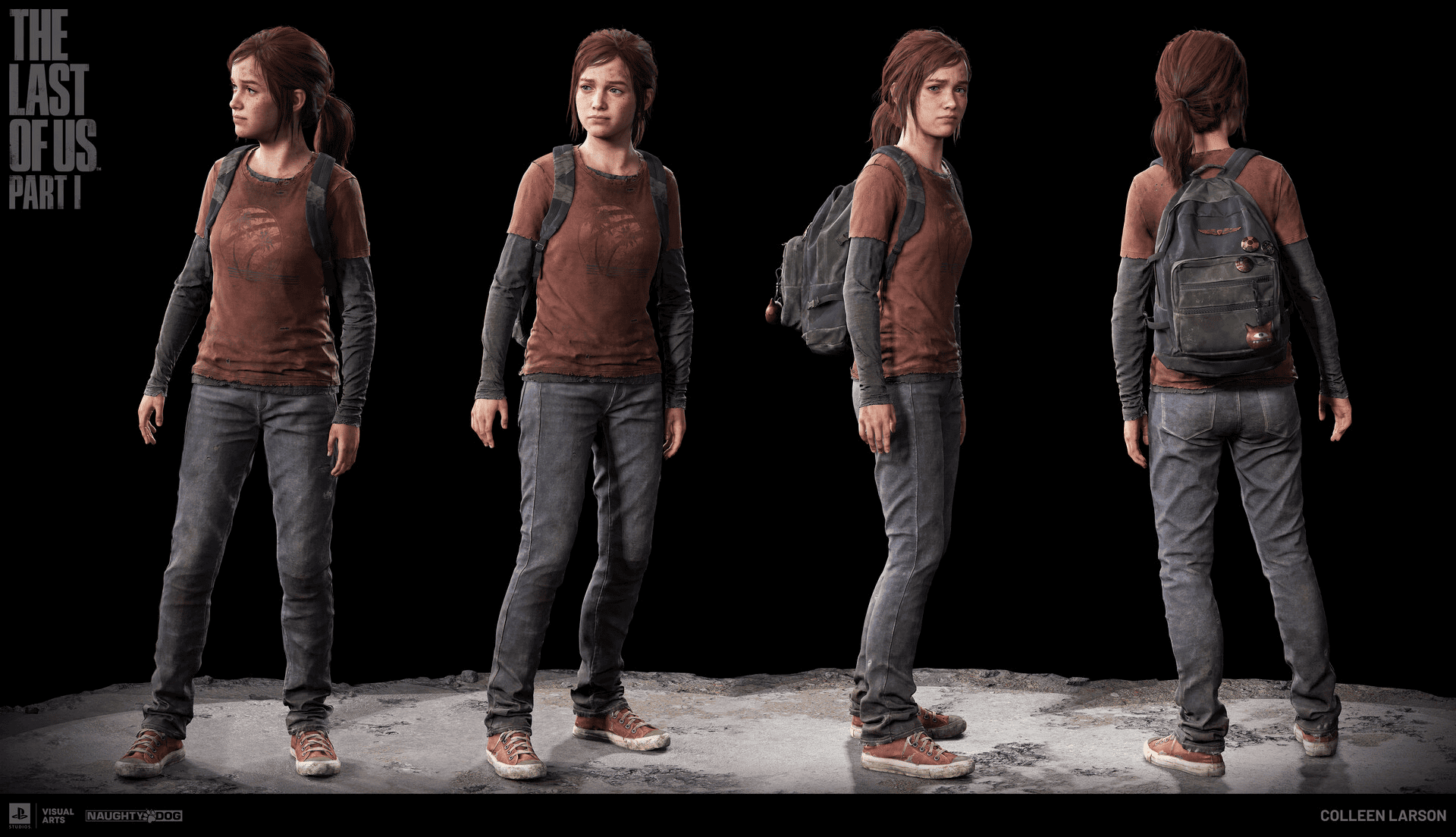
Ellie in The Last of Us. Source
- Stylize only with an understanding of where and how reality is being ignored
Hard-core artistic decisions are always a choice. You can “break” anatomy only when you know exactly what you’re breaking. This is how you can make players accept even the most absurd images as convincing.
For instance, characters are missing standard human anatomy in Hollow Knight, but their movements, poses, and interactions with their environment are harmonious—thanks to general logic and consistency.
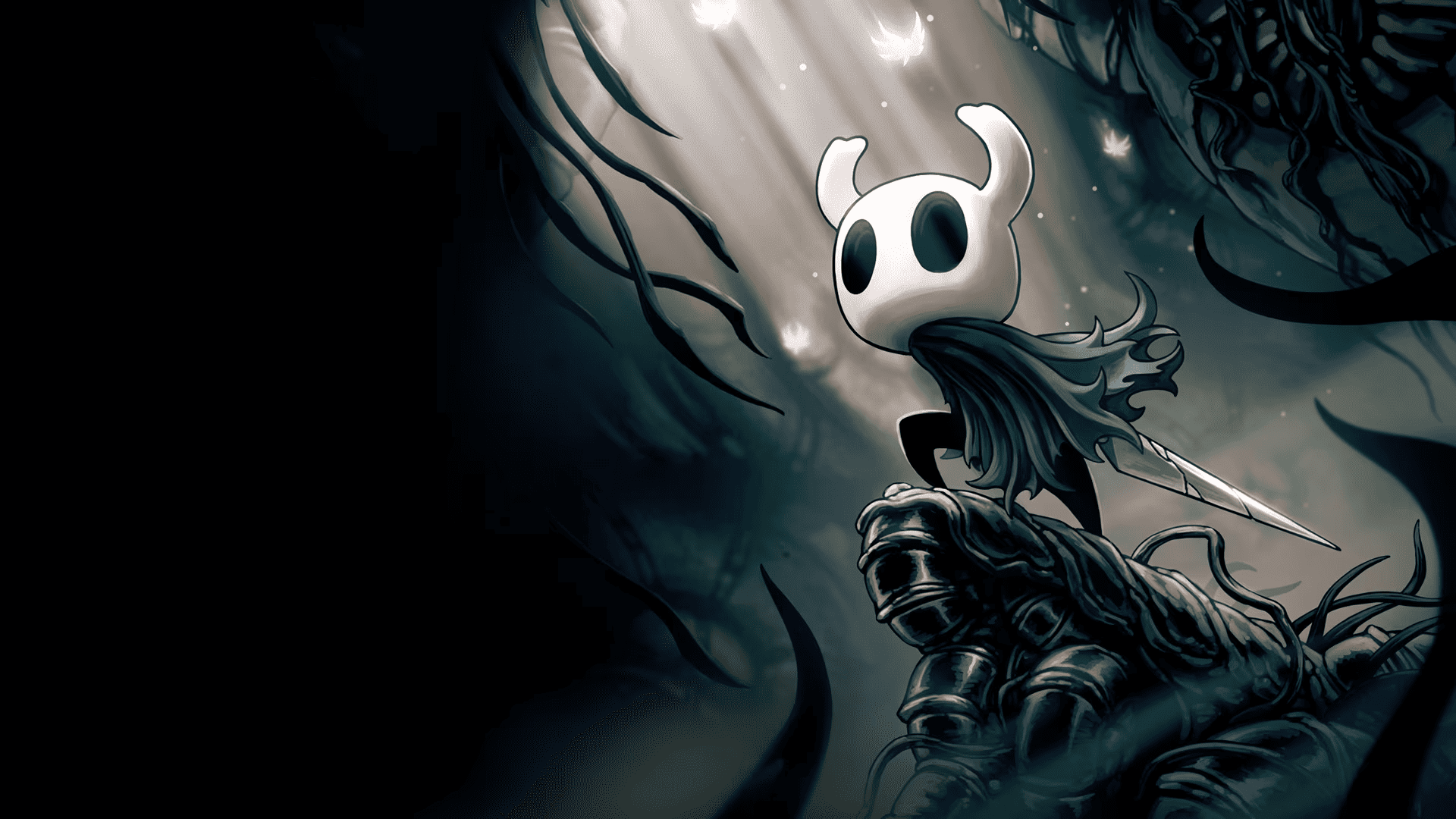
The protagonist of Hollow Knight. Source
Meanwhile, in Cuphead, players accept the hypertrophied forms thanks to animation references from the ’30s, but the movements still obey the logic of real bodies: they’re recognizable and understandable.
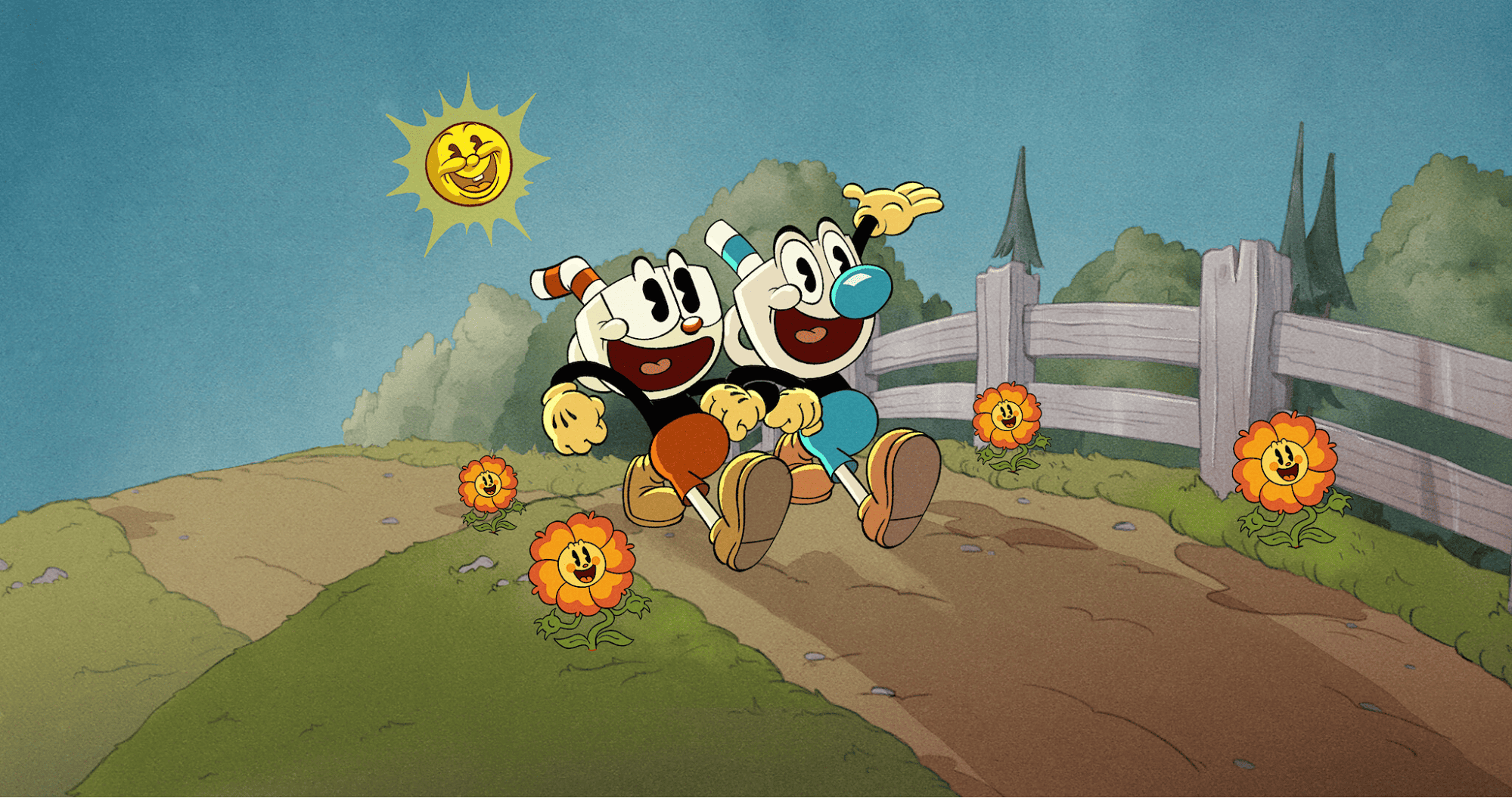
Cuphead. Source
There are, of course, bad examples, where the balance and harmony have been disturbed.
- Mass Effect: Andromeda—face and body animations
Upon release, the game became a meme not only because of the emotionless faces, but also because of the characters’ strange movements.
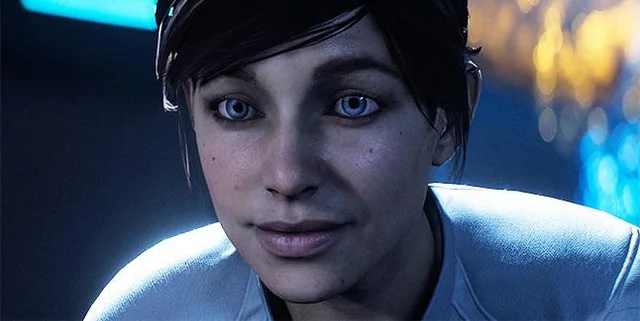
The heroine’s “glass eyes” in Mass Effect: Andromeda aren’t the game’s only problem. Reddit users also discussed the many other unrealistic elements of the characters’ faces and bodies. Source
In the game, bodies don’t respond to head movement, facial expressions are disconnected from the anatomy of the face, and gestures don’t match emotions. In real life, our facial muscles work in sync with our eyes, eyebrows, and neck when speaking. When this is missing, the character seems like a doll or mannequin.
- Unrealistic female bodies
Early games with female characters often used overexaggerated forms that didn’t follow anatomical logic: impossibly thin waists, unrealistically angled backs, and breasts that defied the laws of gravity.
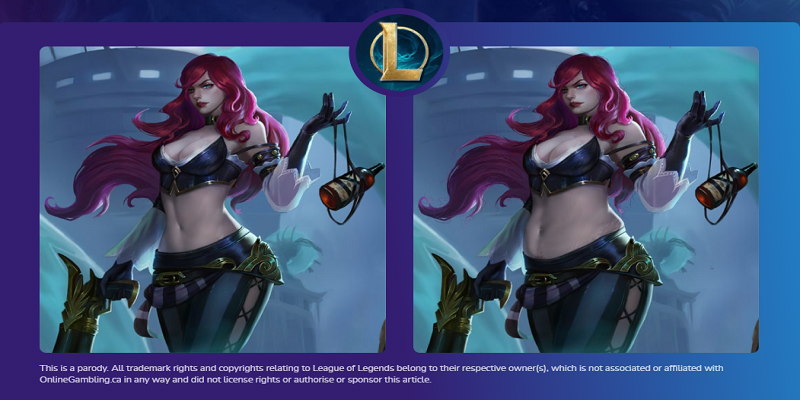
Some heroines in League of Legends have incredibly slim waists and wide hips—here’s what that would look like in real life. Source
Artists ignored human anatomy here for the sake of beauty, appeal, and fan service. These proportions disrupt our perception of motion. Poses look unnatural, strikes ridiculous, and the body broken.
The history of anatomy
The study of human anatomy as the basis of art began as early as the Renaissance. Artists sought to understand how peoples’ bodies worked in order to properly depict them on canvases.
Leonardo da Vinci, one of the most famous researchers who studied anatomy, created detailed anatomical sketches of dissected bodies, not for the sake of medicine, but for the sake of realistic art. His sketches of muscles, tendons, and skeletons are still considered to be benchmarks for visual analysis of bodies.
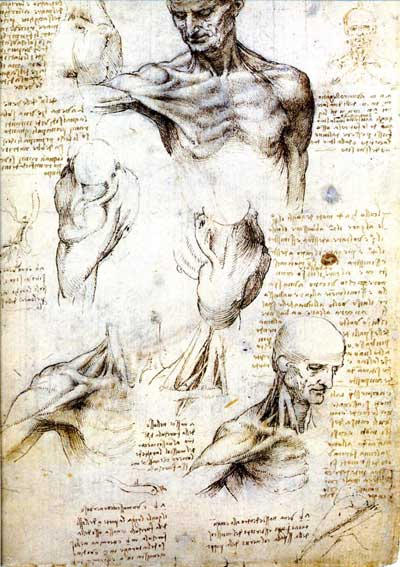
Da Vinci’s sketches. Source
Later, human anatomy became an integral part of academic art education. Everything—painting, sculpture, and drawing—was based on the knowledge of a body’s proportions, volume, and structure.
With the birth of animation (especially at Disney in the mid-twentieth century), artists began exploring not only body structure but also the dynamics of movement. Bodies are often stylized in cartoons, but their movability and poses still follow anatomical laws—characters come alive when artists follow the rules of centers of gravity, muscle stretching, and balance.
This knowledge has been smoothly transferred to the gaming industry, where anatomy influences visual design as well as the animation, physics, and behavior of characters. Today’s 3D artists and animators, like their skilled counterparts of the past, study the body, although now they do so with the help of 3D anatomical models and courses.
Anatomy basics to help you draw characters better
In order to create a character for a game, you must understand what makes up a body. Here are three basic systems to study.
The skeleton
The skeleton provides the foundation of the form, defining proportions, axis of movement, and posture. If you don’t know the location of key bones, such as the pelvis, spine, or rib cage, characters may look “broken” or unnatural.
The muscles
Muscles provide volume, silhouette, and dynamics. Being able to draw even the basic muscle groups, such as the deltoids, pecs, biceps, and quadriceps, will improve your work with volume, light, and perspective.
Differences between genders
Male and female anatomy differ when it comes to the proportions of the pelvis, shoulders, and rib cage, as well as the distribution of muscle mass and fat. This is important to consider when designing a character so as to visually distinguish gender (or intentionally erase those boundaries!).
How to create a character based on real humans and anatomy
Visual realism, or verisimilitude, begins with an accurate structure. Here’s what helps:
Head size
Classical proportions of people in academic drawings are 7-8 heads tall. This means that the height of the head should fit within the height of the character seven or eight times. These proportions provide a natural and balanced look.
Artists may choose to break this rule deliberately, such as when they stylize a character and emphasize their peculiarities.
- Superheroes are often 8.5 heads tall, meaning they have an elongated body and legs and a small head.
These proportions create a sense of power and an idealized figure. In the game series Injustice (based on DC superheroes), Superman, Batman, and Wonder Woman all have elongated bodies and smaller heads, to lend them a heroic, monumental look.
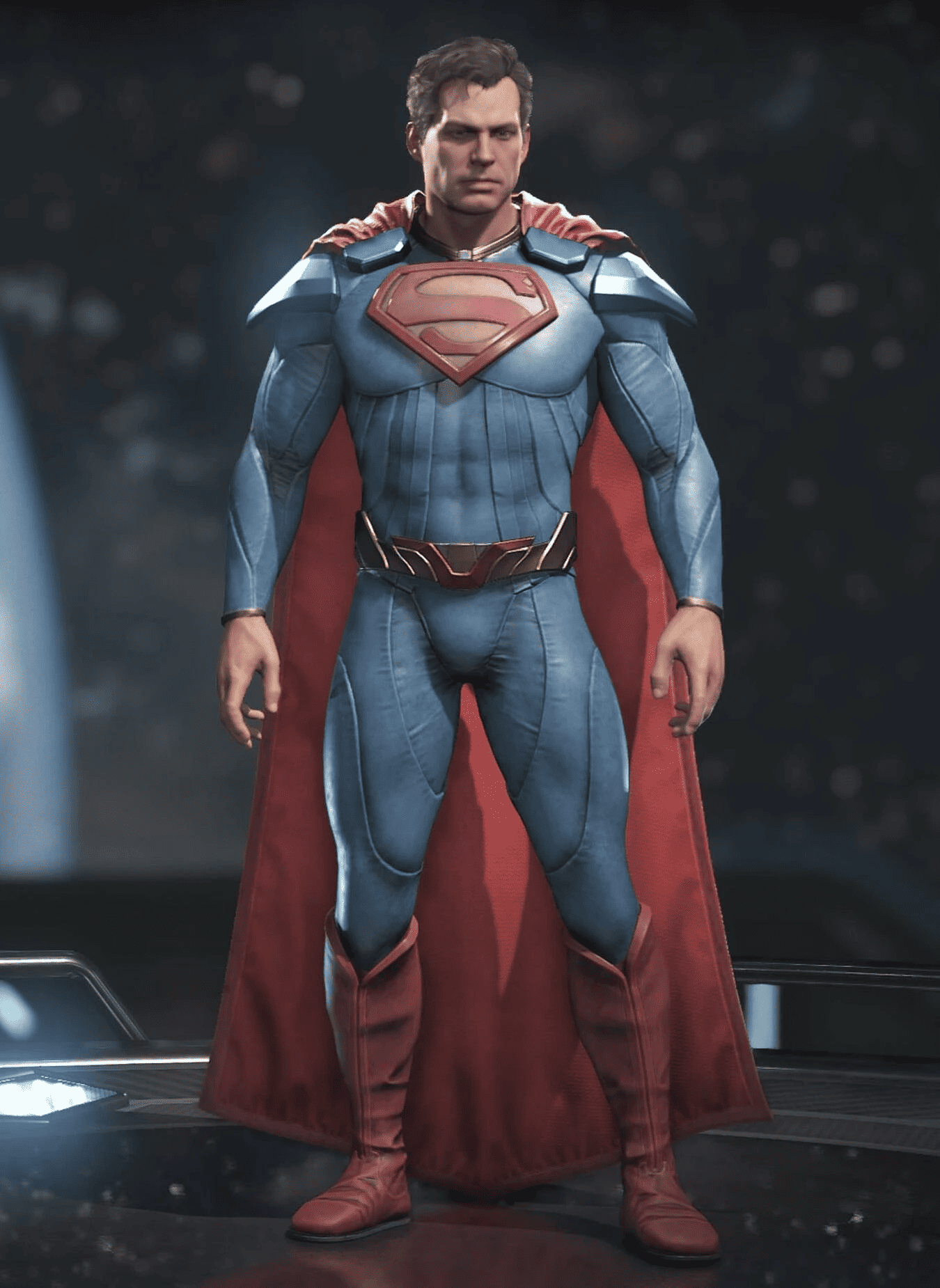
Superman: his head fits within his height about 8 times. Source
- Children or cartoon characters are often 5-6 heads tall.
This makes them appear more naive and cartoonish. Characters like Sora in Kingdom Hearts have slightly larger heads in relation to their body, emphasizing their youthfulness and emotional nature.

Sora: his head fits about 5-6 times. Source
- Chibi style (especially in Japanese games) may only be 2-3 heads tall.
This completely stylistic approach totally ignores the logic of human anatomy but still sticks to its own set of rules, making the look harmonious. A prime example is Animal Crossing characters.

The characters in Animal Crossing have heads that are almost as big as their bodies. Source
The choice of head proportions is no accident here, it’s a tool of expression. Artists must understand the classical norms in order to then step beyond them.
Body types (ectomorph, mesomorph, and endomorph)
Understanding body types helps us diversify characters and add personality. Even when they’re the same height, by giving characters different body types we can tell players a lot about their nature, fighting style, age, and past. There are three basic body types:
- Ectomorph—lean with long limbs, narrow shoulders, and a thin waist. For example, V in Devil May Cry 5 has a thin, elongated figure and angular movements. His design emphasizes fragility, intelligence, and a mystical nature.
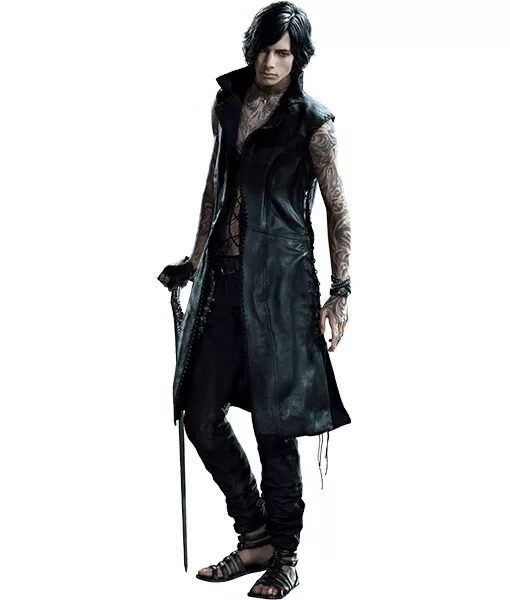
V in Devil May Cry. Source
- Mesomorph—athletic with broad shoulders, pronounced muscles, and good proportions. For example, John Marston from Red Dead Redemption 2 has a balanced body shape without any exaggerated muscles. He looks like someone who can survive in a harsh world, but without any exaggeration.
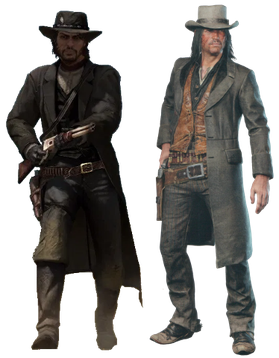
John Marston from Red Dead Redemption 2. Source
- Endomorph—strong, massive, and a more rounded shape. For example, Roadhog from Overwatch is massive but also agile and dangerous. This body type makes the character appear visually “heavy” and suggests a threat.
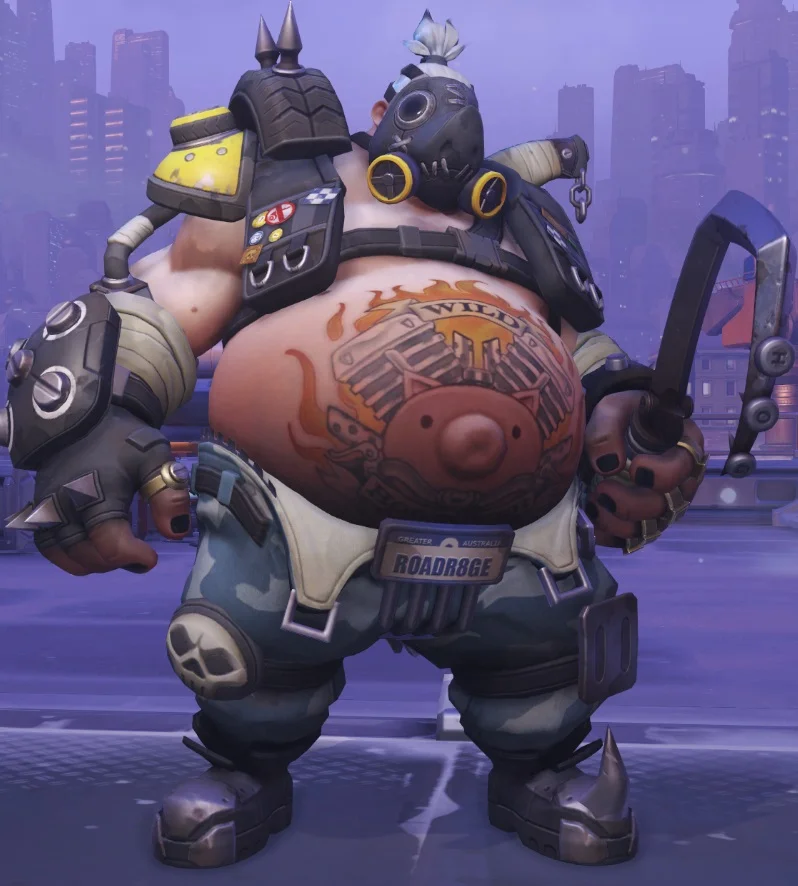
Roadhog from Overwatch. Source
By mixing these types, you can create unique, believable, and recognizable silhouettes, which is especially important for games that have a lot of characters or in online shooters where players need to read the room at a glance.
Differences in gender
Players intuitively recognize male and female bodies even in fantasy games thanks to the visual signs, which in real life are due to the influence of hormones.
- Testosterone promotes muscle growth, boarder shoulders, more angular features, well-defined jawlines, and narrower hips.
- Estrogen affects how fat accumulates around the hips and breasts, smooths facial features, softens lines, and produces a more rounded body shape.
Examples:
- Geralt of Rivia (The Witcher 3) is a classic example of a male body under the influence of a lot of testosterone: broad shoulders, developed muscles, rough facial features, and a lean body.
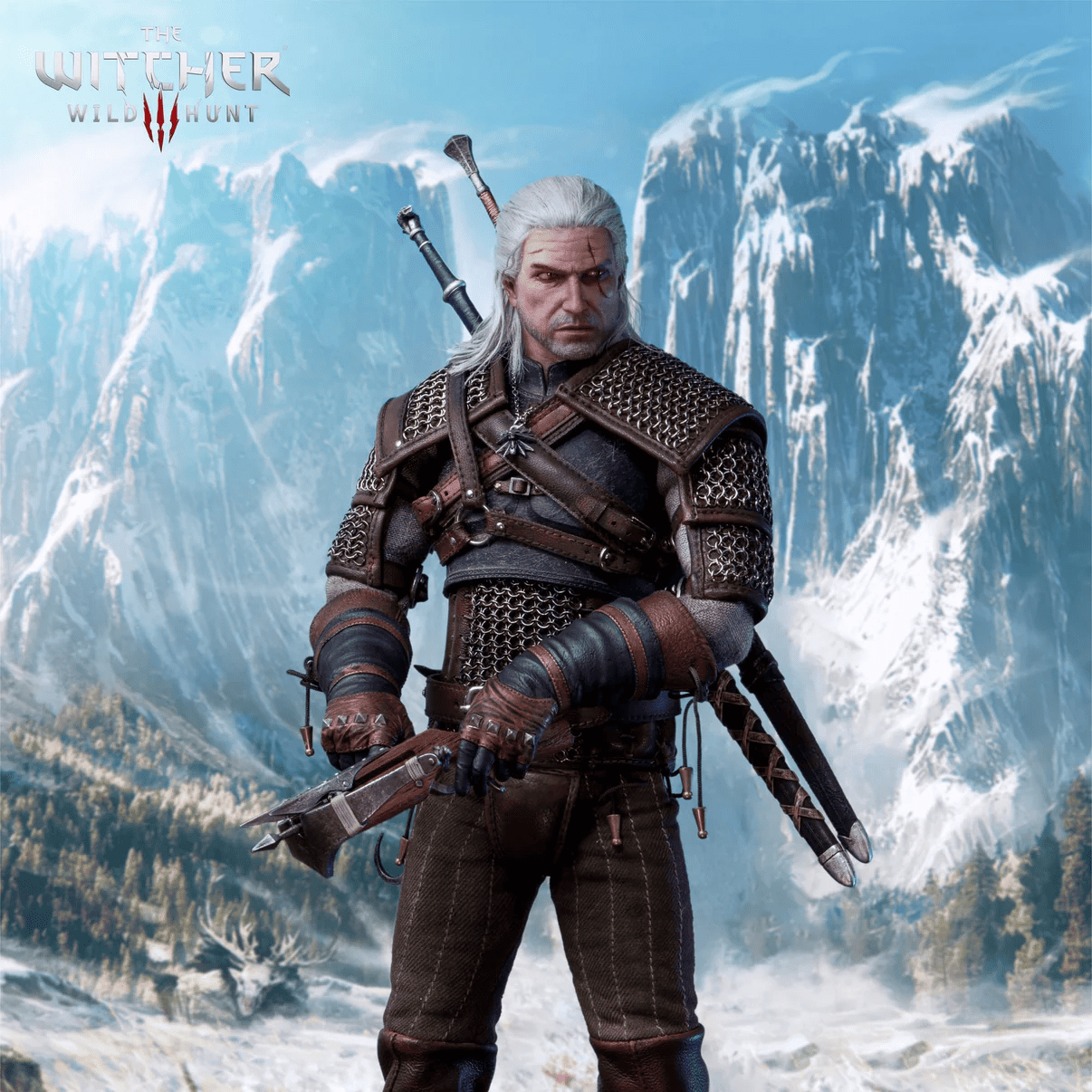
Geralt from The Witcher 3. Source
- Aloy from Horizon Zero Dawn realistically depicts a female body: nothing is overexaggerated but there are rounded shapes, flowing lines, and a soft face.
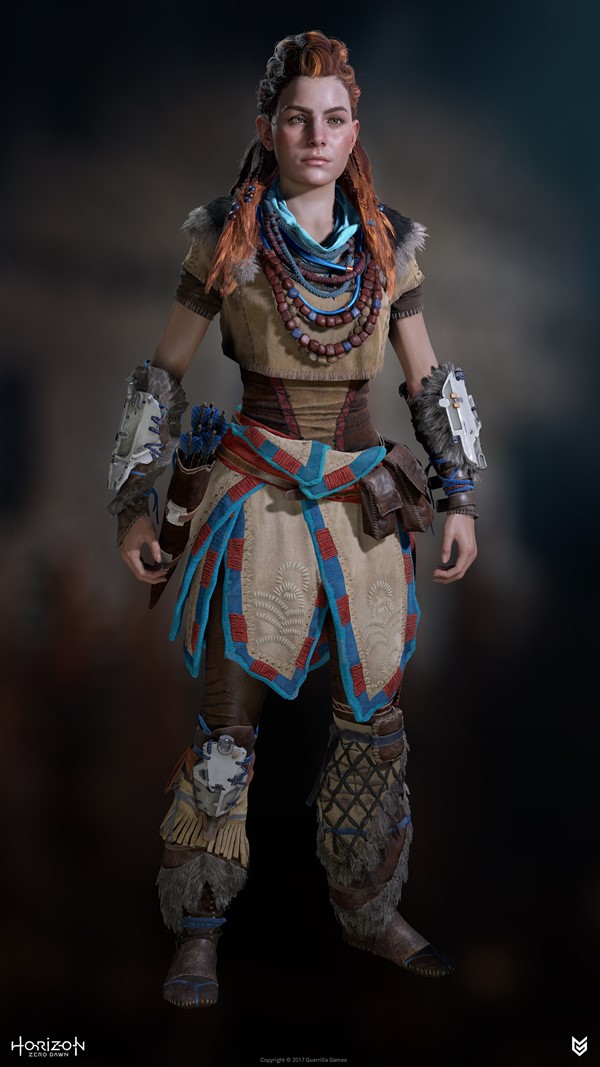
Aloy from Horizon Zero Dawn. Source
Even when we see characters that aren’t human, we subconsciously put them into categories. We do so because their bodies retain these hormonal references (for example, female silhouettes for aliens or robots).
How and where to study human anatomy for creating characters
Useful for artists:
- Anatomical atlases (e.g., Atlas of Human Anatomy for artists)
- Online anatomy classes from CGMA, Proko, or New Masters Academy
CGMA has a 10-week anatomy course plus one on the anatomy of fabrics and garments, which is a separate topic.
- 3D apps (like Zygote Body or Anatomy360)
- Live sketching: train your eye and hand with quick sketches of the world around you
You can also analyze animations in video games by slowing down character movements and looking at how poses and body deformations have been used.
Conclusion
Knowledge of human anatomy is more than just the basis for drawing bodies. It’s the key to creating compelling game characters, elaborate design, expressive animation, and insightful storytelling. Anatomy in art requires attention to detail, even when going for a stylized look.
If you’re looking for realistic or stylized characters for a game, INLINGO’s team of expert artists can help you create visual images that take anatomical nuances into account. Drop us a message, and we’ll discuss your project!

